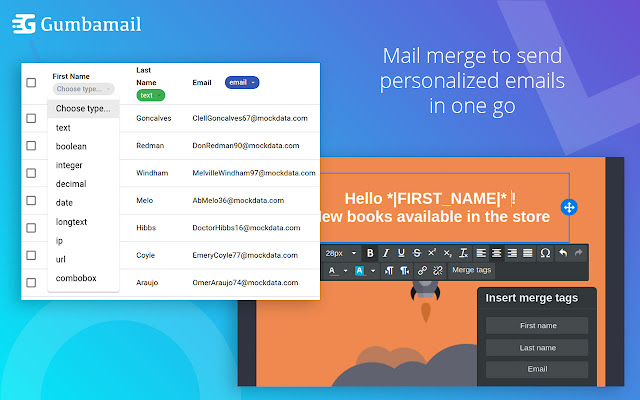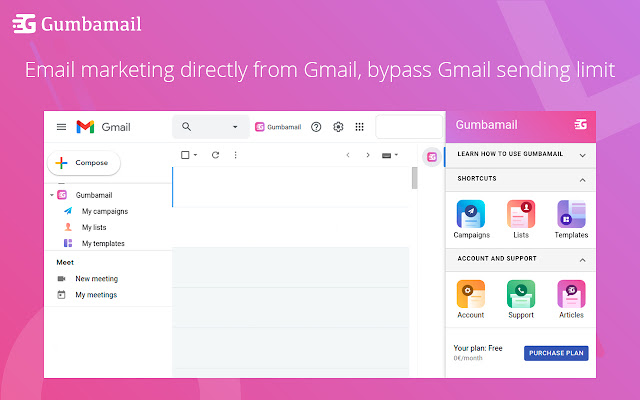4 Email Marketing Trends No Business Owner Can Afford to Ignore
What’s the best way to grow your email list? How do you increase conversions on an e-commerce campaign? How do you get more sign-ups for your email newsletter?
Email marketers will never stop scratching their heads trying to come up with the best solutions to the above questions. While email marketing trends are constantly evolving, there’s one thing we know for sure: Email, as a marketing channel, isn’t going away anytime soon.
According to the 2020 State of Email Report, 94% of marketers rank email as one of the top three channels used within their overall marketing strategy. What’s more, 80% of respondents said they would stop social media before they gave up email as a marketing tool.
Translation: As a marketer or business owner, email marketing is non-negotiable. Now, you just need to find the best way to go about it.
Below, we’re sharing email marketing trends no business owner can ignore, including how to increase customer engagement, share customer-centric content, and stand out in an overflowing inbox.
4 Email Marketing Trends Small Business Owners Need to Keep in Mind

Last year, the COVID-19 pandemic showed business owners they needed a way to connect with their audience online. By building personalized, engaging email campaigns, you can do just that — whether readers are scrolling through their mobile devices or checking their inbox on desktop.
But drafting conversion-driven content is more than clever email subject lines or enticing opt-ins. Below, we explain four email marketing trends to help develop your digital marketing strategy.
1. Invite Readers to Unsubscribe (No, That’s Not a Typo)
Many times, marketers get so focused on growth, they completely overlook engagement — particularly when it comes to email. If you’re prone to the occasional humble-brag on the number of subscribers on your email list, ask yourself: Just how many of those people are actually reading the emails you send out?
The first step in developing emails that people actually want to read is by doing some spring cleaning on your email list. If you have cold subscribers (i.e., those who haven’t opened an email in six months or more), you might consider deleting them from your list. Or, create a segment of those individuals and send them a single email with a [quite blunt] subject line that reads, “Do you want to unsubscribe from this list?”
Emily Thompson, co-host of the Being Boss podcast, once deleted her entire email list, then sent out a three-part email series inviting people to opt back in. The result? A healthier, more engaged email list that she — as a marketer — could oversee. With uninterested parties weeded out, she could better understand the customer behavior of her readers, thereby improving the overall customer experience of her marketing strategy.
2. Think Community First, Conversions Second
Most (er, all?) articles written about email marketing automation reinforce the importance of a clear call to action (CTA). After all, if a channel isn’t making you money, what’s the point?
While we would never, ever tell you to ignore your conversion rate, we would like to introduce a counter argument. Rather than hone in on how your emails serve you (i.e., get you buyers), why not focus on how they serve your audience?
How many times have you taken a step back and asked the question, “Would I want to read this? What valuable content am I offering?” Rather than create hard-hitting, salesy emails (that frankly, can feel a bit spammy), think of how your newsletter can continue to provide value to your audience — even if it lengthens the time it takes to reach a conversion.
Alisha Ramos, founder of the popular newsletter Girls’ Night In, famously grew her email list from 150 to 60,000 subscribers in a single year by doing just that. Each week, Ramos pieced together a fun newsletter encompassing activities, podcasts, articles, and other must-reads to support women who chose to rest, recuperate, and practice self-care rather than going out. Rather than focusing on making a sale, she dedicated 100% of her time to finding content her audience would relish in reading.
The result? She created an email list with a 50% open rate (nearly 5x the industry average!) and captured the attention of numerous brand partners. Today, she continues to put her community first, turning down 90% of brands who approach her.
3. Grow Your List With Interactive Content
To grow their email list, business owners use enticing opt-ins — including free e-books, case studies, reports, email courses, and more. When a reader downloads the content, they’ll be placed inside an automated workflow where they receive a welcome email (or series).
Whatever opt-in you choose to offer must pass this test: Is it worth an individual handing over their private email address?
If you’re looking for the best email content to offer as a freebie, consider ditching static e-books or PDFs for interactive mediums, including games, quizzes, calculators, or self-assessments. According to the Content Marketing Institute (CMI), 81% of survey respondents say that interactive emails are more effective at capturing readers’ attention than static content.
Gretchen Rubin, international bestselling author of “The Happiness Project” and host of the Happier Podcast, created The Four Tendencies quiz to help grow her email list. Based on her book, “The Four Tendencies,” the quiz helped readers determine how they respond to their expectations, helping them meet deadlines, stop procrastination, and motivate themselves to reach their goals.
According to Amazon, Rubin published four books over the course of her career that collectively sold 3.5 million copies. And yet, 3 million people have taken this one quiz (meaning, far more people have taken the quiz than read the book).
Here’s what that tells you: Increasing email interactivity will capture people’s attention, thereby helping to grow your list.
4. Create Dynamic Content to Make Email a One-to-One Conversation

If you want to wreak havoc on your deliverability rates, try blasting your entire list with every email you send. (Translation: Don’t do it!)
Too often, marketing teams approach their email marketing strategy the same way they would approach their blog, search engine optimization (SEO), or social media: Publishing one post to their entire audience.
One of the biggest advantages email has over other mediums is that it can be customized to the end reader — an advantage that will boost your marketing efforts in the long run. Research shows that personalized emails have a 139% better click-through rate than other email marketing campaigns.
Take a hard look at your audience, developing different personas for your readers. Once you identify these key personality traits, take advantage of list segmentation and adjust your messaging for each group. Finally, you can improve the user experience of each email by addressing it to the reader’s first name, or even adjusting the send time to correlate with each reader’s time zone.
Here’s one last way to personalize your emails: Make it look like a real email. While marketers like to conduct A/B testing to determine the latest design trends, research shows that plain-text emails get a 17% higher click-through rate than HTML emails. Pro tip: You can make your emails look even more natural by sending these emails from your existing Gmail account, so it makes readers feel like they’re receiving a note from a friend — rather than a sales pitch from a company.
How Gumbamail Can Boost Your Email Marketing Efforts

Email is one of the most efficient channels a marketer can use to scale a business. However, with so much conflicting information available online, it’s hard to know which marketing trends will help engage your audience.
To build an effective email campaign, focus on your most engaged buyers by deleting cold subscribers from your list and sharing community-centric content. In addition, use interactive content (like games or quizzes) as an opt-in, and personalize each email with dynamic content.
Gumbamail makes it easy for marketers to convert subscribers into an engaged community. With over 250+ email design templates at your fingertips, you can send gorgeous, personalized emails to your list. In addition, Gumbamail works with your existing Gmail account, so you can connect with those you already know, whether you import them from a .CSV file (exported from LinkedIn or CRM system), Google Sheets, or your existing contact list.
Ready to see how Gumbamail can help deepen your connection to your audience? Get started with your free account today.


